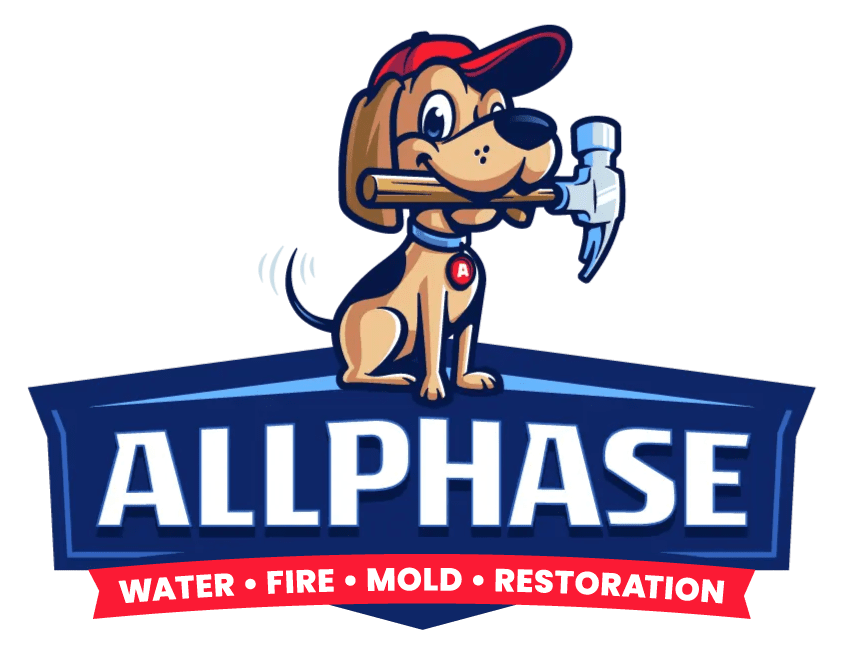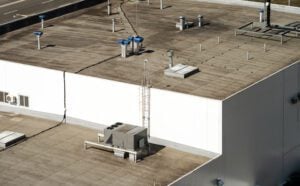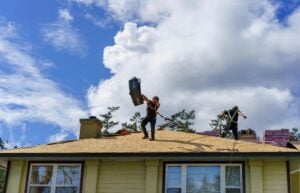Metal roofs are known for their durability and longevity, often lasting 40-70 years with proper care. However, even the most robust metal roofing systems eventually show signs of wear that signal it’s time for metal roof replacement. Recognizing these warning signs early can save you from costly water damage and help you plan for this significant investment.
Here’s what we’ll cover in this guide:
- Visible signs of metal roof deterioration
- Performance issues that indicate replacement needs
- Age-related factors to consider
- How weather impacts metal roof lifespan
🔎 Visible Signs Your Metal Roof Needs Replacement
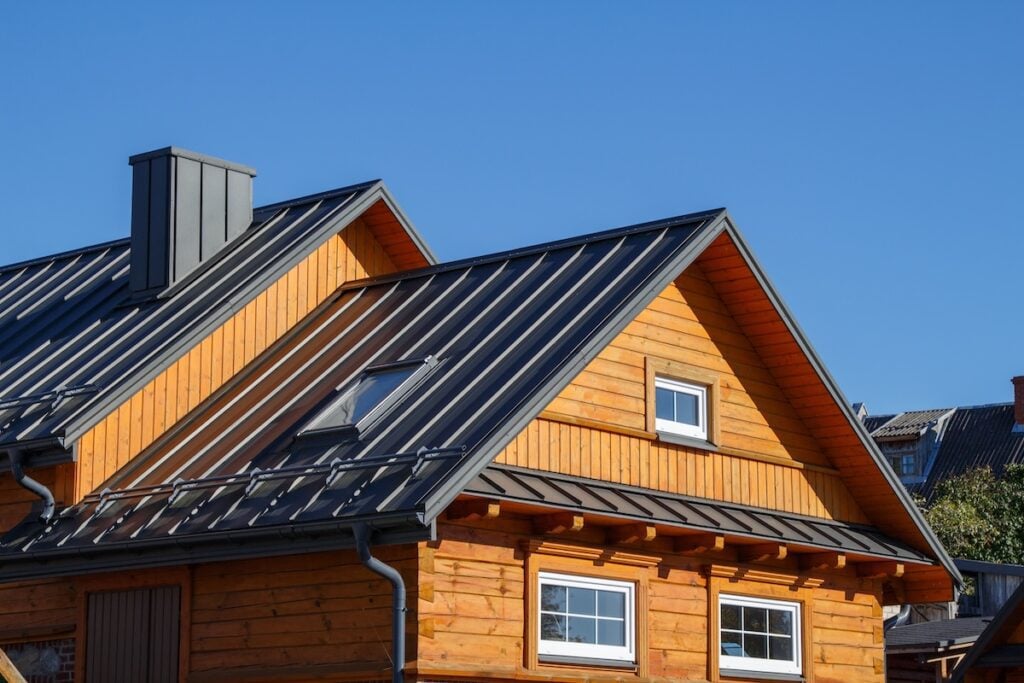
Knowing the signs that your metal roof needs replacement can help you prevent costly damage to your home. Addressing issues early ensures your roof stays durable and protects your property effectively.
Widespread Rust and Corrosion
Rust is one of the most obvious indicators that your metal roof replacement may be overdue. While small spots of surface rust can often be treated, extensive corrosion that covers large sections of your roof presents a serious problem.
- Rust penetrates through the protective coating and into the metal substrate, compromising the roof’s structural integrity.
- Look for brown or reddish stains spreading across roof panels.
- Rust around fasteners, seams, or areas where different metals meet suggests water infiltration, which will worsen over time.
Loose or Missing Fasteners
Metal roofing relies on properly secured fasteners to maintain its weatherproof seal. Over time, thermal expansion and contraction can cause screws to back out or loosen.
- Missing or loose fasteners create entry points for water and reduce wind resistance.
- Look for scattered screws or washers on the ground, which may have fallen from compromised fastener points.
- Lifted or wavy sections of roofing often indicate failed fasteners.
Damaged or Deteriorated Sealants
The sealants around roof penetrations, seams, and flashing points serve as your roof’s first line of defense against water intrusion. When these sealants crack, shrink, or pull away, your home becomes vulnerable to leaks.
- Check areas around chimneys, vent pipes, skylights, and other penetrations for cracked or missing caulk.
- Dried or brittle sealant that flakes away easily indicates inadequate protection.
👉 Performance Issues That Signal Replacement
Performance issues can impact efficiency, reliability, and overall functionality, often leading to downtime or costly repairs. Identifying these signs early helps prevent larger problems and ensures systems run smoothly.
Recurring Leaks Despite Repairs
If you find yourself calling for roof repairs multiple times per year, your metal roof may be telling you it’s time for replacement. Frequent leaks often indicate that problems have spread beyond what spot repairs can address effectively.
- Water stains on ceilings, walls, or in the attic signal ongoing moisture intrusion.
- Even minor leaks can lead to significant structural damage and mold growth over time.
Poor Energy Efficiency
An aging metal roof may lose its reflective properties, leading to higher cooling costs during summer months. If your energy bills have increased significantly and your HVAC system seems to run constantly, your roof’s thermal performance may have declined.
- Metal roofs are designed to reflect solar heat, but a chalky, faded, or damaged surface diminishes this benefit.
- A roof that no longer provides adequate insulation may need replacement to restore energy efficiency.
Excessive Noise During Weather Events
While metal roofs naturally produce some sound during rain or hail, excessive noise often indicates loose panels or deteriorated underlayment. If your roof has become noticeably louder during storms, the mounting system may have failed in multiple locations.
- Increased noise often suggests structural integrity issues.
- Loose or failing panels and underlayment typically come with other performance problems.
⚠️ 5 Key Warning Signs That Indicate Metal Roof Replacement
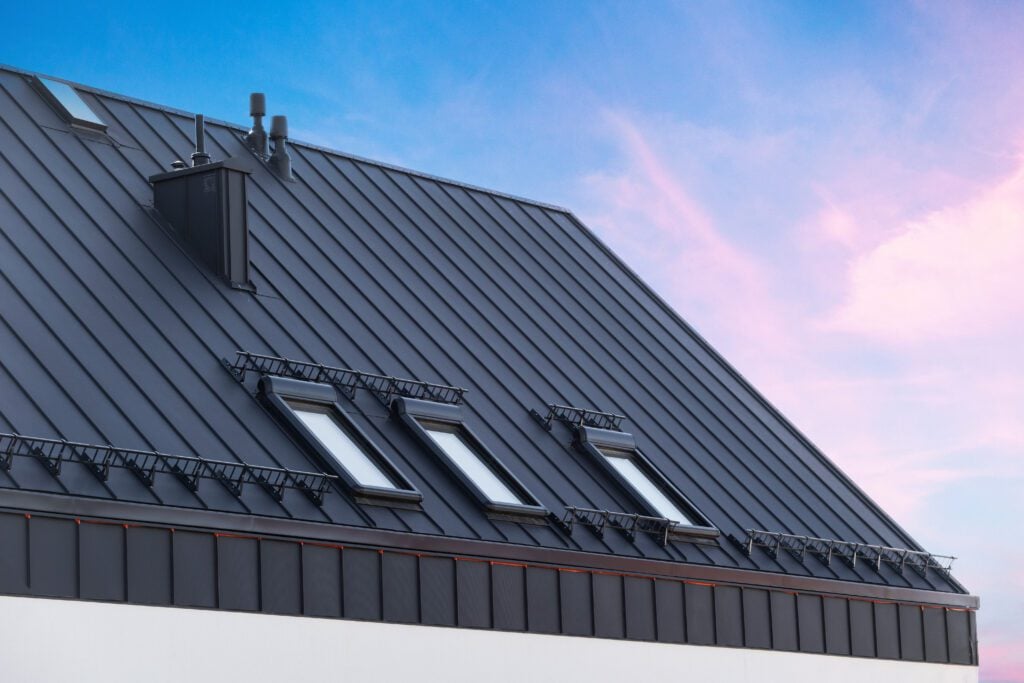
Recognizing the warning signs of a failing metal roof is essential to prevent costly damage to your home or building. Timely replacement ensures long-term protection and avoids issues like leaks or structural deterioration.
1. Age of Your Current Roof
Most metal roofs last between 40-70 years, depending on the material quality and installation. If your roof is approaching or exceeding this timeframe, replacement becomes more cost-effective than continued repairs.
2. Widespread Panel Damage
Hail, falling branches, or severe weather can cause dents, cracks, or holes across multiple roof panels. When damage affects more than 25% of your roof surface, replacement often makes more financial sense than extensive repairs.
3. Failing Flashing Systems
Flashing around chimneys, dormers, and roof valleys directs water away from vulnerable areas. When flashing systems fail consistently, they indicate that your roof’s overall waterproofing has reached the end of its effective life.
4. Structural Concerns
If your roof deck shows signs of sagging, rot, or damage, this underlying structural issue must be addressed during metal roof replacement. Continuing to patch a roof over compromised decking creates safety hazards and voids most warranty coverage.
5. Obsolete Materials or Design
Older metal roofing materials may no longer meet current building codes or energy efficiency standards. Upgrading to modern metal roofing systems can improve your home’s performance and value while ensuring code compliance.
💧 Weather-Related Factors in Ohio
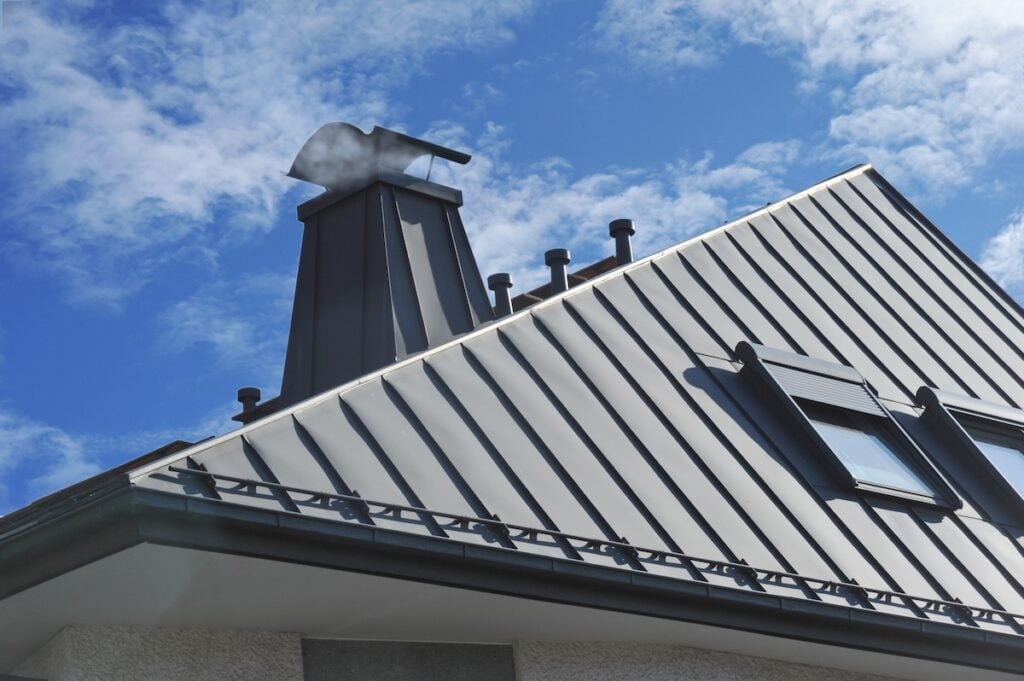
Ohio’s climate presents unique challenges for metal roofing systems.
Extreme Weather Conditions and Their Impact on Metal Roofs
The state often faces severe temperature swings, thunderstorms, tornadoes, and ice storms, all of which contribute to roof wear and tear. These conditions accelerate deterioration, making regular maintenance crucial to extend the life of your metal roof.
Freeze-Thaw Cycles and Structural Stress
Repeated freeze-thaw cycles cause metal to expand and contract over time. This movement can loosen fasteners, weaken seams, and create stress points that compromise the roof’s integrity. Addressing these issues early can prevent costly repairs.
Snow and Ice Risks to Metal Roofs
Heavy snow can overload older mounting systems, while ice dams can force water beneath panels through weakened seams. These issues can lead to leaks and further damage if not managed promptly.
When to Consider Professional Inspection
If your metal roof has endured multiple severe storms or shows visible signs of stress, such as leaks or loose panels, it’s time for a professional inspection. An expert can assess the damage and help you decide whether repairs or a full replacement is the best solution for long-term durability.
🤝 Trust AllPhase for Your Metal Roof Replacement Needs
At AllPhase Restoration, we understand that metal roof replacement represents a significant investment in your property. Our experienced team has helped Ohio homeowners navigate this decision for years, providing honest assessments and quality workmanship that stands the test of time.
Don’t wait until minor issues become major problems. Contact AllPhase today to schedule your free roof inspection and discover why Ohio homeowners trust us for their metal roof replacement needs. Let our team help you protect your most important investment with a metal roofing system designed to last.
